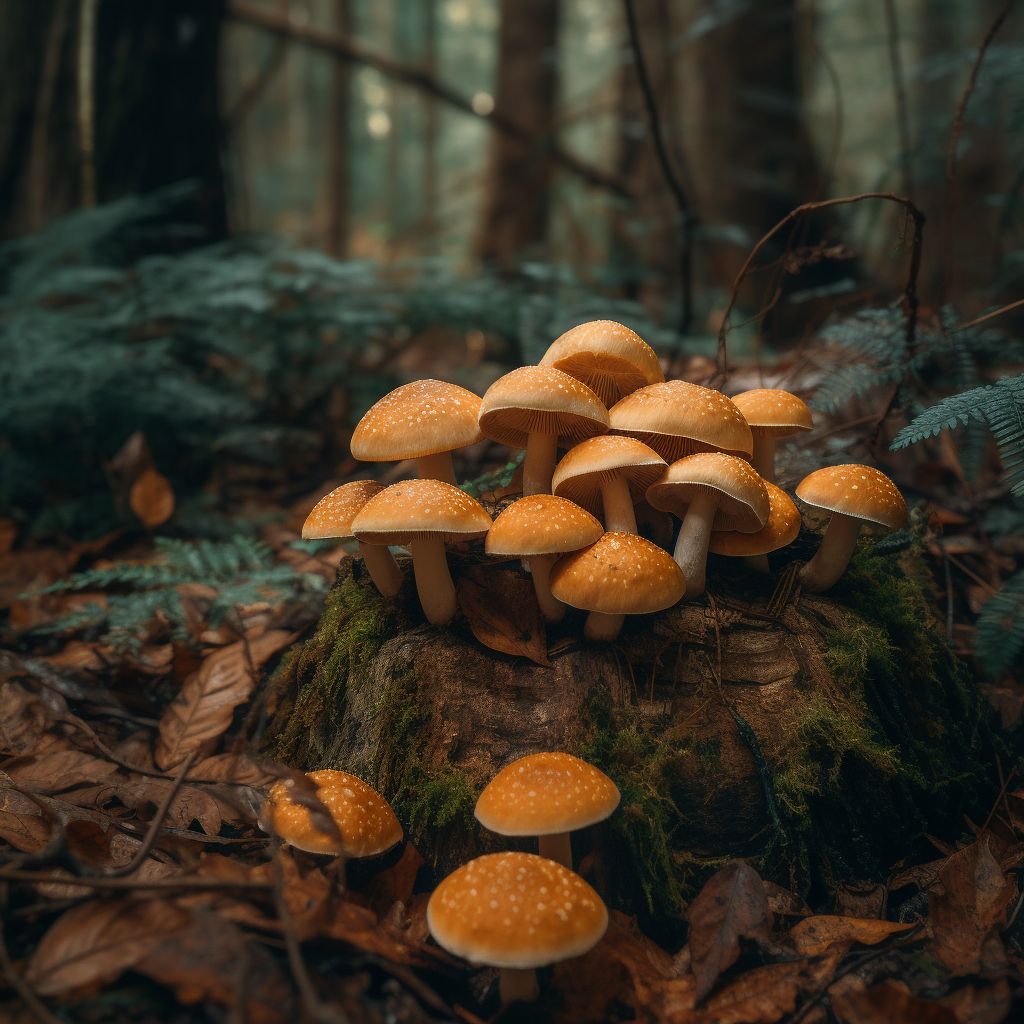Mushrooms
Mushrooms are a diverse group of fungi that produce a fruiting body called a sporocarp, which releases spores for reproduction. They can be found in various habitats throughout the United States, including forests, grasslands, and urban environments. Some mushrooms are edible and highly prized for their culinary applications, while others are toxic and can pose a danger to humans and animals. This article provides an overview of the most common types of mushrooms in the United States, their uses, and their significance in the late 19th century.
Common Types of Mushrooms
Agaricus bisporus: Commonly known as the white button mushroom, Agaricus bisporus is one of the most widely cultivated and consumed mushrooms in the United States. It has a mild flavor and firm texture, making it a versatile ingredient in a variety of dishes. The mature form of this mushroom, known as the portobello, has a larger cap and a more intense flavor.
Amanita muscaria: The iconic red and white-spotted mushroom, Amanita muscaria, is a toxic species commonly found in the Northern Hemisphere. While not deadly, consumption can result in hallucinations, nausea, and other unpleasant symptoms. Due to its striking appearance, it is often associated with fairy tales and folklore.
Boletus edulis: Known as the king bolete or porcini, Boletus edulis is a highly sought-after edible mushroom with a rich, earthy flavor. It is commonly found in coniferous and deciduous forests throughout North America and is prized for its culinary applications, particularly in Italian cuisine.
Cantharellus cibarius: The chanterelle is a golden-yellow mushroom with a distinctive funnel shape and a fruity aroma. It is considered a choice edible species and is often used in gourmet dishes. Chanterelles are found in hardwood forests, particularly under Oak and beech trees.
Coprinus comatus: The shaggy mane is an easily recognizable mushroom due to its tall, cylindrical shape and shaggy, white cap. It is edible when young, but as it matures, the cap dissolves into an inky black liquid. This self-digestion process is a unique characteristic of the Coprinus genus.
Morchella esculenta: Commonly known as the morel, Morchella esculenta is a highly prized edible mushroom with a honeycomb-like appearance. It is typically found in forests and grasslands during the spring months. Morels are valued for their unique texture and nutty flavor and are often used in gourmet dishes.
Amanita phalloides: Known as the death cap, Amanita phalloides is a highly toxic mushroom responsible for the majority of fatal mushroom poisonings in the United States. It closely resembles some edible species, making it a dangerous fungus for inexperienced foragers. Symptoms of poisoning include severe abdominal pain, vomiting, and diarrhea, eventually leading to liver and kidney failure if left untreated.
Uses and Significance
In the late 19th century, mushrooms were an important food source for many communities, particularly in rural areas. Edible species were collected from the wild, and some, like the white button mushroom, were cultivated on a small scale. Mushrooms were also used for medicinal purposes, with certain species believed to have healing properties.
The study of mushrooms, known as mycology, was a growing field of interest in the 19th century. Naturalists and amateur enthusiasts alike sought to identify and document the numerous species found throughout the United States. This scientific curiosity led to a better understanding of the diverse world of fungi and their ecological importance.
Mushrooms also played a role in cultural practices and beliefs during this time. Some species, like Amanita muscaria, were associated with folklore and myth due to their striking appearance. Others, like the morel, were celebrated in local festivals and community gatherings as a symbol of the changing seasons and the bounty of nature.
Caution and Identification
While many mushrooms are edible and enjoyed for their culinary qualities, it is essential to exercise caution when foraging for wild mushrooms. Proper identification is critical, as some toxic species closely resemble their edible counterparts. In the late 19th century, guidebooks and field manuals were available to assist amateur mycologists in the identification of various mushroom species. However, inexperienced foragers were still at risk of mistaking toxic mushrooms for edible ones.
To ensure safety, it was recommended that individuals consult with experienced foragers or mycologists before consuming any wild mushrooms. Additionally, some general rules were followed, such as avoiding mushrooms with white gills, a ring around the stem, or a bulbous base, as these characteristics were often associated with toxic species.
Conclusion
Mushrooms were an important part of the culinary, medicinal, and cultural landscape of the United States in the late 19th century. The diverse range of species found throughout the country, from the edible and highly sought-after to the toxic and deadly, underscores the importance of proper identification and caution when foraging for these intriguing fungi.

